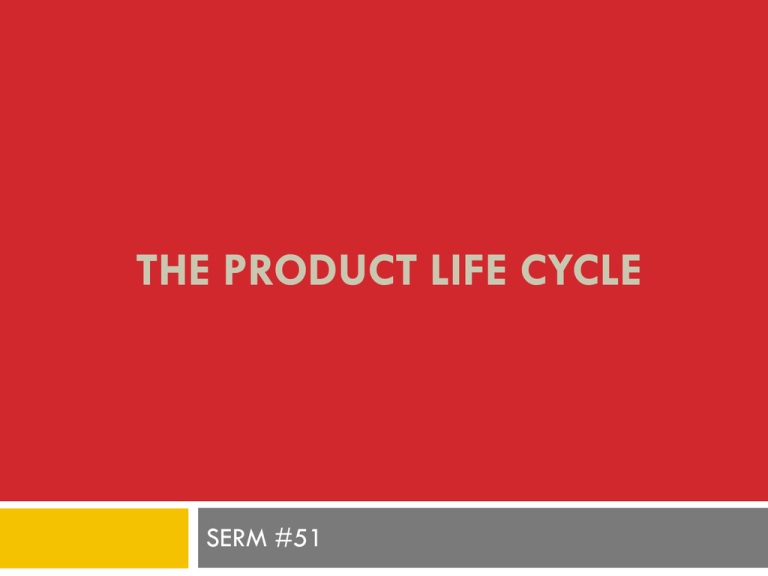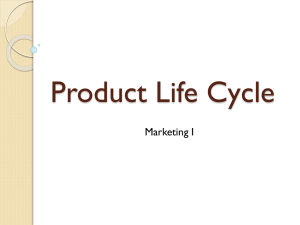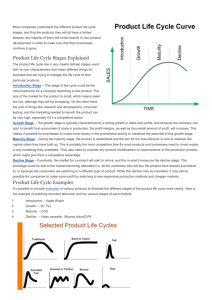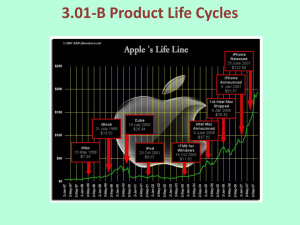THE PRODUCT LIFE CYCLE SERM #51
advertisement

THE PRODUCT LIFE CYCLE SERM #51 Product Life Cycle Maturity Stage 1: Introduction Stage 1: Introduction Occurs when product first enters marketplace Promoting consumer awareness Getting customers to try new product Millions of dollars spent to educate consumers Major task: getting product in the marketplace Example: cassette tapes Stage 2: Growth Stage 2: Growth More competitors enter the marketplace Adding distribution outlets Product improves: adding flavors, features, etc. Improved to stay competitive Sold in more locations Example: cassette tapes Stage 3: Maturity Stage Stage 3: Maturity Stage Sales begin to slow down for the product Repeat customers stop buying the product Attracting new buyers is a challenge Product has reached its peak Example: cassette tapes Stage 4: Decline Stage 4: Decline Sales and profits drop Little to no marketing support Product may be dropped by company There is no longer a demand for the product Example: cassette tapes The Product Life Cycle Review Introduction Growth Decline Maturity Manage the Life Cycle Product Modification: Changing a product’s characteristics Companies market this “new” product to increase sales Market Modification: Strategy to find new customers package, features, appearance, quality Modify the product to create new target market Encourage current customers to use the product more Repositioning: Change product’s image in relation to competitor’s image A change in any of the 4 P’s (Marketing Mix) Class Activity Take a related Sports Entertainment product through the 4 stages of the Product Life Cycle (IN DETAIL): introduction, growth, maturity, decline Explain IN DETAIL how you can Manage the Life Cycle (pick 1 listed below): Product Modification, Market Modification, Repositioning



